16MM RUN
Bruce Conner
#Agora
16MM RUN, the ongoing experimental film programme organized in collaboration with Villa Lontana continues on Wednesday 15 May, at 7 pm, with the screening of a series of works by the American painter, sculptor and filmmaker Bruce Conner (1933-2008), pioneer of found footage and master of assemblage: Looking for Mushrooms (1956-67/1996, 14’), Cosmic Ray (1961, 4’), Breakaway (1966, 5’), The White Rose (1967, 7’), Valse triste (1978, 5’), America is waiting (1981, 3’) and A Movie (1958, 12’).
Looking for Mushrooms, 1956-67/1996, 14’
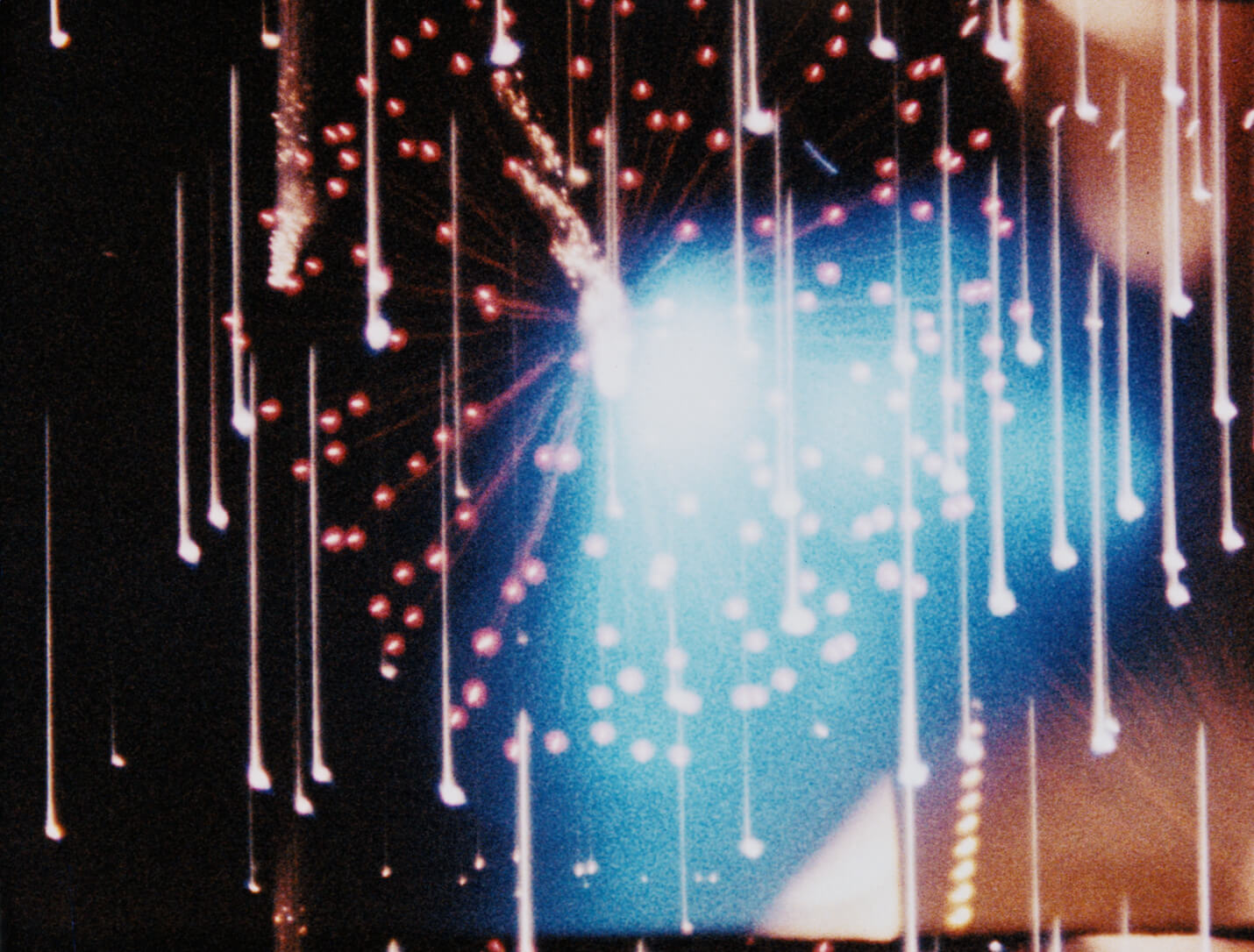
Courtesy of the Conner Family Trust / © Conner Family Trust.
Looking for Mushrooms (1959-1967) is a psychedelic travelogue film that documents a series of “trips” through rural Mexico and urban America. Conner combined street views of San Francisco shot in the late 1950s with scenes of rural Oaxaca captured during his “mushroom-hunting” excursions between 1961 and 1962, when Bruce and his wife, the artist Jean Sandstedt, were living in Mexico City. On at least one of these trips, the Conners were joined by Timothy Leary, the ex-Harvard professor and soon-to-be leading proponent of psychedelic drugs.
Whereas an earlier version of the film was silent and played on a loop, in 1967 Conner added a rock soundtrack, The Beatles’ Tomorrow Never Knows off their 1966 album Revolver. Conner often noted that this version of Looking for Mushrooms (along with Cosmic Ray) was often rented by advertising agencies, which were presumably interested in his use of rapid-fire editing and strobe effects to generate visual disorientation and subliminal messages. In 1996, Conner revised the film once again: he used an optical printer to expand its length from three to fourteen-and-a-half-minutes, and added a new soundtrack, Terry Riley’s Poppy Nogood and the Phantom Band, to create a more meditative, but no less hypnotizing, iteration of the mushroom hunt. — Johanna Gosse, Art Historian.
Cosmic Ray, 1961, 4’
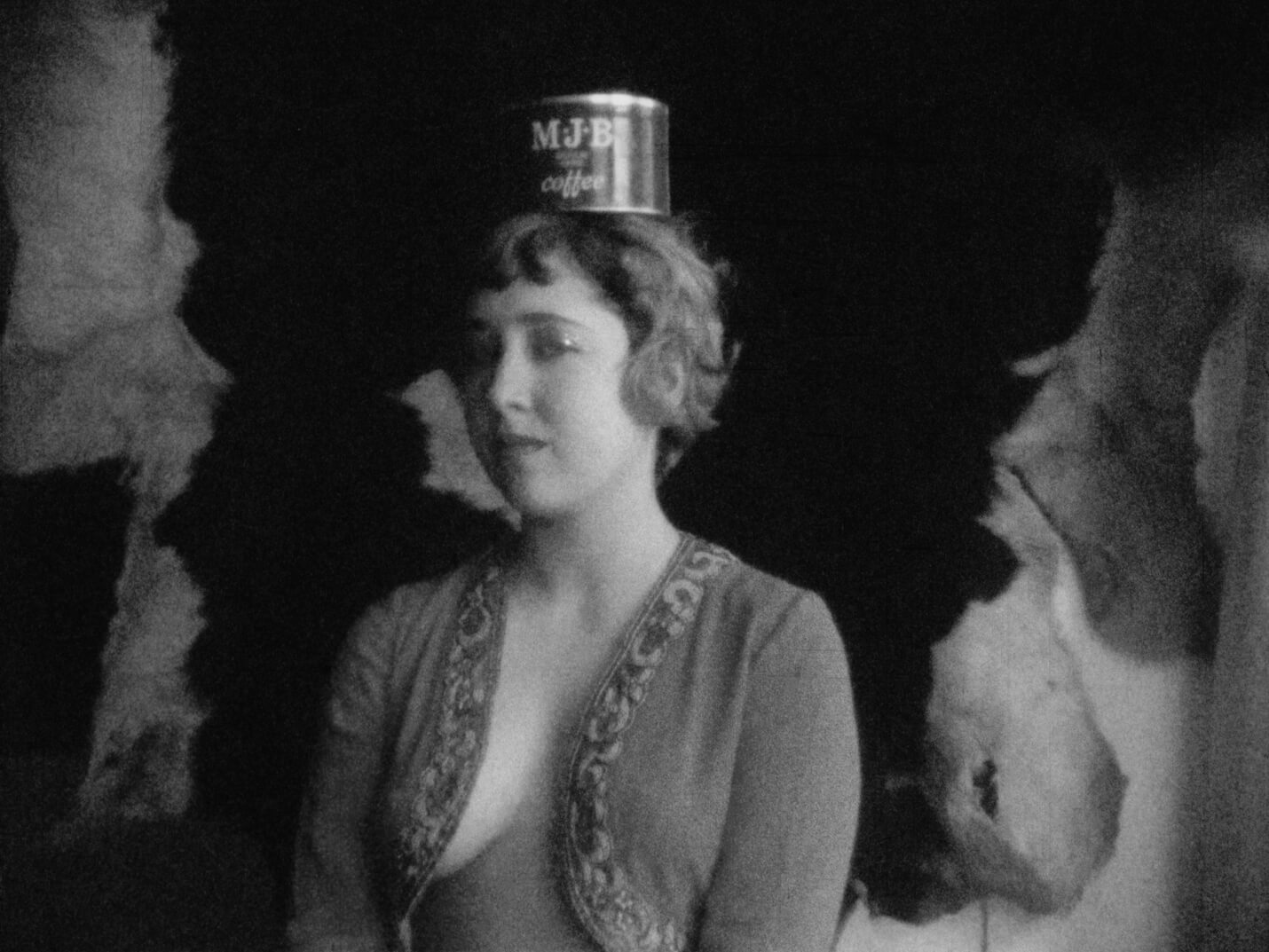
Courtesy of the Conner Family Trust / © Conner Family Trust.
“Cosmic Ray seems like a reckless collage of fast moving parts: comic strips, dancing girls, flashing lights. It is the dancing girl – hardly dressed, stripping or nude – which provides the leitmotif for the film. Again and again she appears – sandwiched between soldiers, guns, and even death in the form of a skull positioned between her legs. And if the statement equates sex with destruction, the cataclysm is a brilliant one, like an exploding firecracker, and one which ends the world with a cosmic bang. Of course, the title also refers to the musician Ray Charles, whose art Conner visually transcribes onto film as a potent reality, tough and penetrating in its ability to affect some pretty basic animal instincts. But if such is the content of the film – that much of our behaviour consists of bestiality – the work as a whole stands as insight rather than indictment.” – Carl Belz, Film Culture.
The soundtrack of the film is What’d I Say (Live from Atlanta, 1959) by Ray Charles.
Breakaway, 1966, 5’
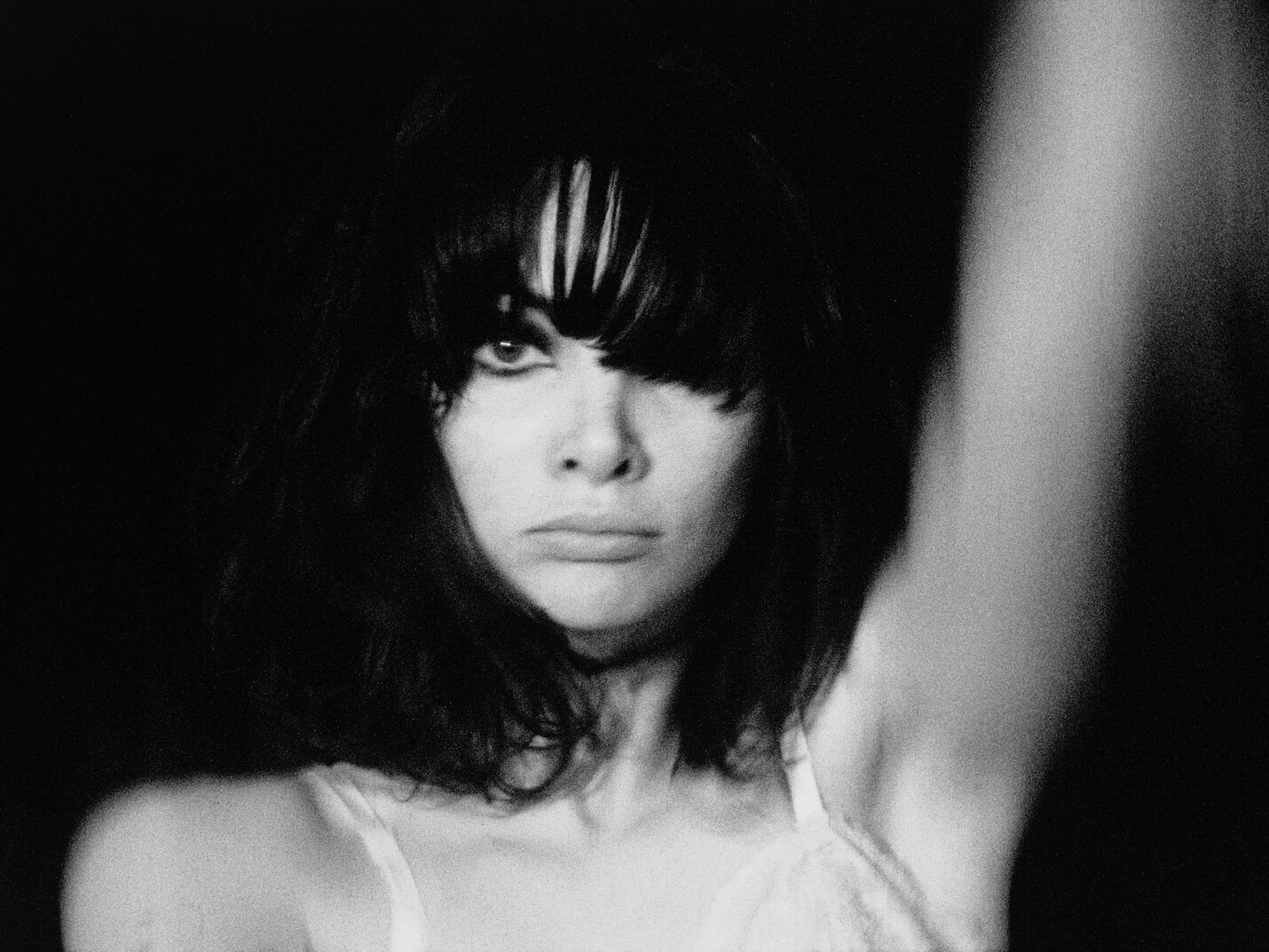
Courtesy of the Conner Family Trust / © Conner Family Trust.
Breakway is a dynamic five-minute homage to the female form, counterculture, pop music, and the kinetic possibilities of film. It is also one of the few films shot by Conner himself, rather than material found from other sources. The location was a collector’s house in Santa Monica. Conner’s friends, the actors Dean Stockwell and Dennis Hopper, held the lights, and the subject was Antonia Christina Basilotta, a young singer and choreographer, dancing and writhing frenetically to her song Breakaway, with music by Ed Cobb.
The five-minute film opens with a flickering image of Basilotta posing against a black background, dressed only in a black bra and black tights into which holes have been cut. After a few seconds the music starts: the B-side of the titular single released in February 1966 under her stage name Toni Basil, a driving, high-tempo track which sets the pace for the film. Basil’s dancing is lively, but through Conner’s quick-zoom camera and stroboscopic editing it becomes almost frenetic, her underwear changing—then disappearing—in the blink of a camera’s gate. Just over two minutes into the film, as the song fades and the screen goes black, the film plays in reverse, sound and vision, from its end to its beginning. The film was shot at single frame exposures as well as 8, 16, 24 and 36 frames per second.
The White Rose, 1967, 7’

Courtesy of the Conner Family Trust / © Conner Family Trust.
In 1965, Bruce Conner filmed fellow artist Jay DeFeo and her monumental, then-unfinished artwork, The Rose (1958–66), in the moments leading up to its extraction from her San Francisco studio. In an obsessive, implacable quest, DeFeo devoted over eight years of her life to The Rose, a radiant accumulation of mica and oil paint that blurred distinctions between painting and sculpture. Prior to the work’scompletion, DeFeo was evicted from her studio and forced to uproot her possessions and her art. Conner’s resulting film, The White Rose (1967), situates DeFeo’s masterpiece as its protagonist, documenting its forceful prying from the bay window in which it was made, as well as its journey to the sidewalk below and the moving truck that carries it away.
The soundtrack of the film is Sketches of Spain by Miles Davis.
Valse triste, 1978, 5’
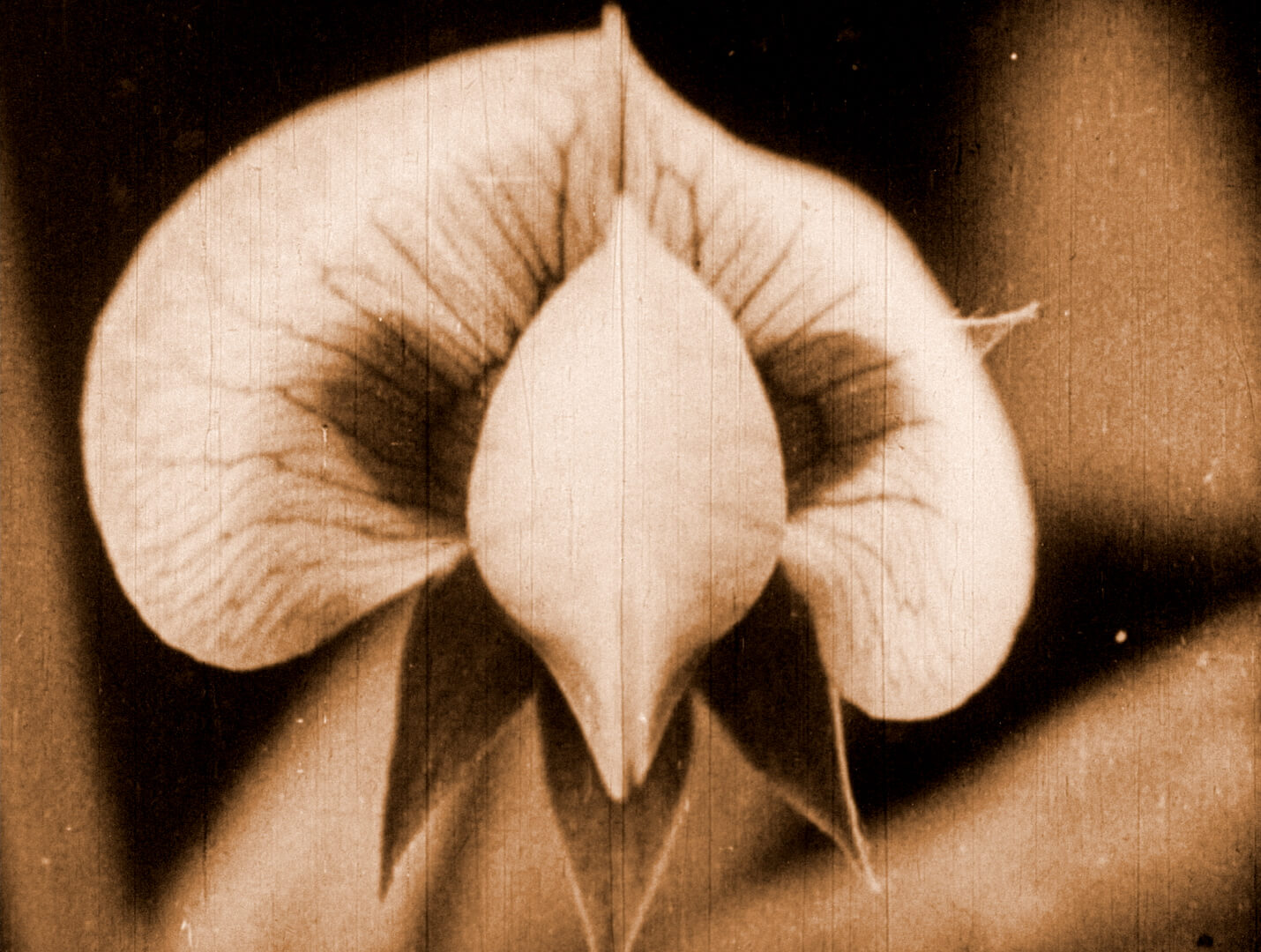
Courtesy of the Conner Family Trust / © Conner Family Trust.
Valse Triste is a homage to surrealist cinema and a belated trance-film (the psychodramas of Maya Deren, Kenneth Anger and Sidney Peterson date from the 1940s, the time of Conner’s adolescence). Autobiographical of Conner’s Kansas boyhood, the film also reworks the debased popular “dream sequence”, principally by imitating one of its cliche-prone situations—a boy’s dream about steam engines, daily chores, home travel and girls. Shorn of context, ordinary images keep their typicality but gain uniqueness, mystery and the aura of memory. Beneath the period charm are disturbing ripples. Conner’s imitation of the dream form is not a parody or a mockery, but it frames ironies as complex as in his other films, as deeply rooted in American social life. Each item of the collage retains something of its former identity — the footage of battered trucks, floods and the pervading melancholic mood, all evoke a very undreamlike social fact, the stubborn survival of life after a recent past of poverty and depression.
America is waiting, 1981, 3’
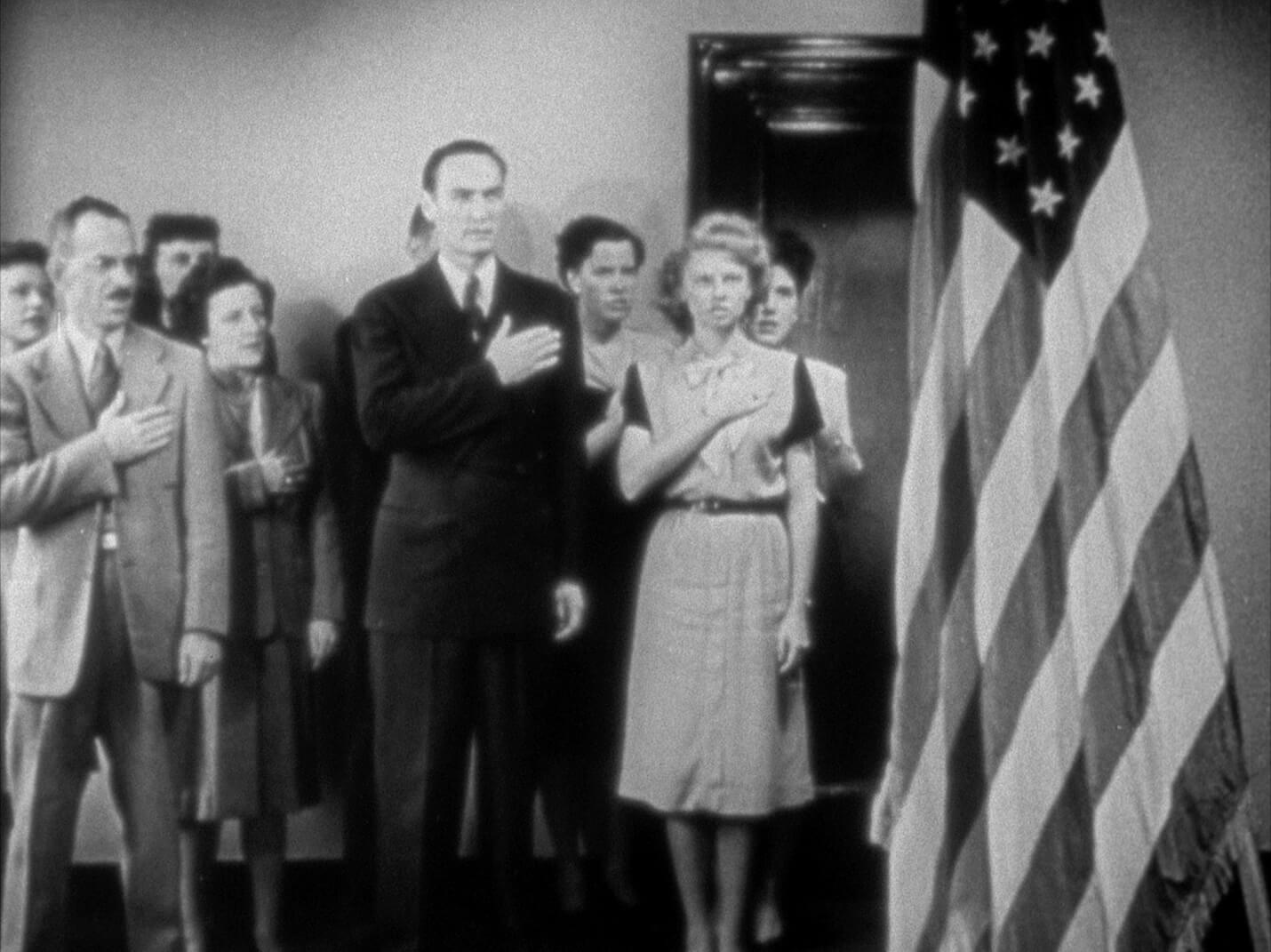
Courtesy of the Conner Family Trust / © Conner Family Trust.
America Is Waiting (1981), like Conner’s earlier films, is a compilation, a wacky assortment of bits and pieces of old newsreels, educational films, Hollywood movies, ’50s TV commercials, and hermetic fragments of industrial “film features”. Conner’s films are resurrections of sorts, and like most resurrections there is something about them that is both ghoulish and uncanny.
America Is Waiting is about America, about American culture in general, and about American self-image as articulated by attitudes toward national strength, patriotism, and a vanished Golden Age of cherished national ideals. It is a film that articulates images of war, death, and disintegration in a way that pointedly challenges and subverts this legacy.
The title of the film is taken from its soundtrack, a David Byrne/Brian Eno song from My Life in the Bush of Ghosts. The soundtrack cues the editing in Conner’s film, providing a running commentary on the image as a way of generating a complex of meaning and association.
A Movie, 1958, 12’
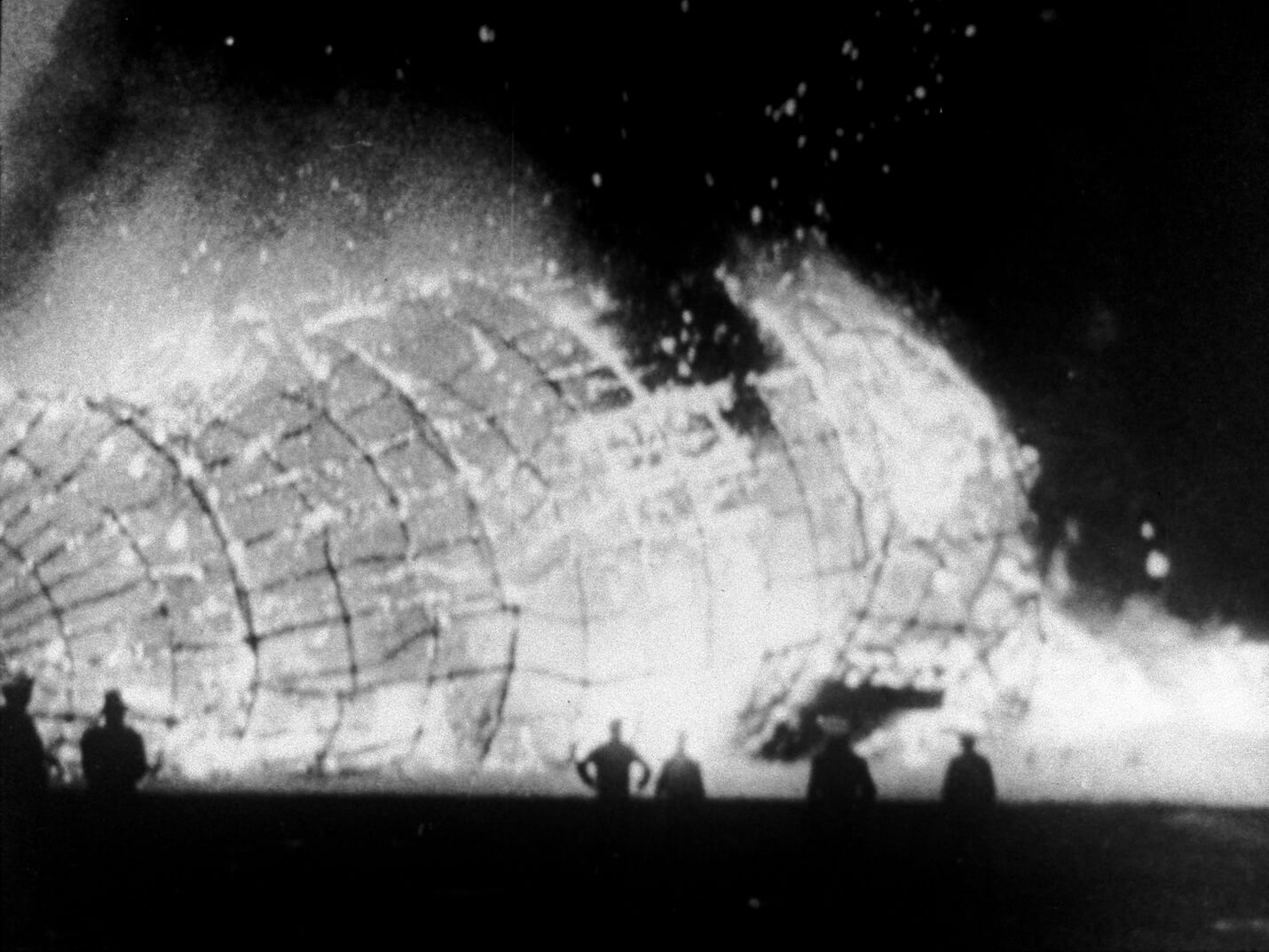
Courtesy of the Conner Family Trust / © Conner Family Trust.
With A Movie (1958), Conner launched a lifelong celebration of moving images alongside his other artistic practices of collage, assemblage, drawing and photography. He reconceived mid-century notions of cinema itself, as A Movie simultaneously explores the very nature of cinema and montage in the modern era.
Comprised of discarded 16mm films purchased at flea markets or scavenged from camera shops, A Movie has been described by many as the first contemporary “found footage film”. Conner crafted this work with care and absolute precision, qualities that would define his entire oeuvre in diverse media. A Movie orchestrates a virtual symphony of disasters, car crashes, explosions, war, famine, as well as serene moments of grace—a tightrope act, a plane floating through clouds, light reflected on water. Although seemingly random in its sequence of imagery, A Movie abstractly yet deftly moves the viewer through a wide range of human experience and emotion.
With Respighi’s Pines of Rome as the soundtrack to A Movie, Conner established a visual poetry that combines music and image. Conner would refine this marriage of sight and sound over the next several decades in other films, and lay the groundwork for the music video we know today.
The screening will take place in the sala cinema.
BRUCE CONNER (1933–2008) was one of the foremost American artists of the postwar era. Emerging from the California art scene, in which he worked for half a century, Conner’s work touches on various themes of postwar American society, from a rising consumer culture to the dread of nuclear apocalypse. Working simultaneously in a range of media, Conner created hybrids of painting and sculpture, film and performance, drawing and printing, collage and photography. Conner earned a national reputation with his shocking sculpture “Child” (1959), a grotesque wax figure lashed to a high chair with nylon stockings, and for his pioneering assemblages, which he called “Rat Bastards”. Between 1957 and 1964 he made nearly two hundred of these hybrid accretions of found objects bound together with nylons. For materials Conner raided junk shops and run-down Victorian houses in Western Addition, a predominantly African American neighbourhood. Using scavenged objects and adopting a self-consciously marginalized stance, he created sculptures inspired by installations made by local junk dealers and other storeowners. Equally a pioneer of avant-garde filmmaking, Conner developed a quick-cut method of editing that defined his oeuvre. Incorporating footage from a variety of sources—countdown leaders, training films, and newsreels—and later adding his own 16mm film footage, Conner’s films also focus on disturbing but utterly current themes. A key figure in the Beat counterculture of the 1950s, Bruce Conner rejected bourgeois ideals of art as an expression of privileged creativity that produces a beautiful, eternal object. Instead, he challenged artists to deliver new forms based on new values—spontaneity, impurity, the degraded, and the marginal. In 1968, anxious to evade easy classification, Conner gave up his New York representation and turned increasingly to performance and conceptual art. Working fluidly in a range of media and later associating with the hippie and punk subcultures, he remained a restless maverick.


